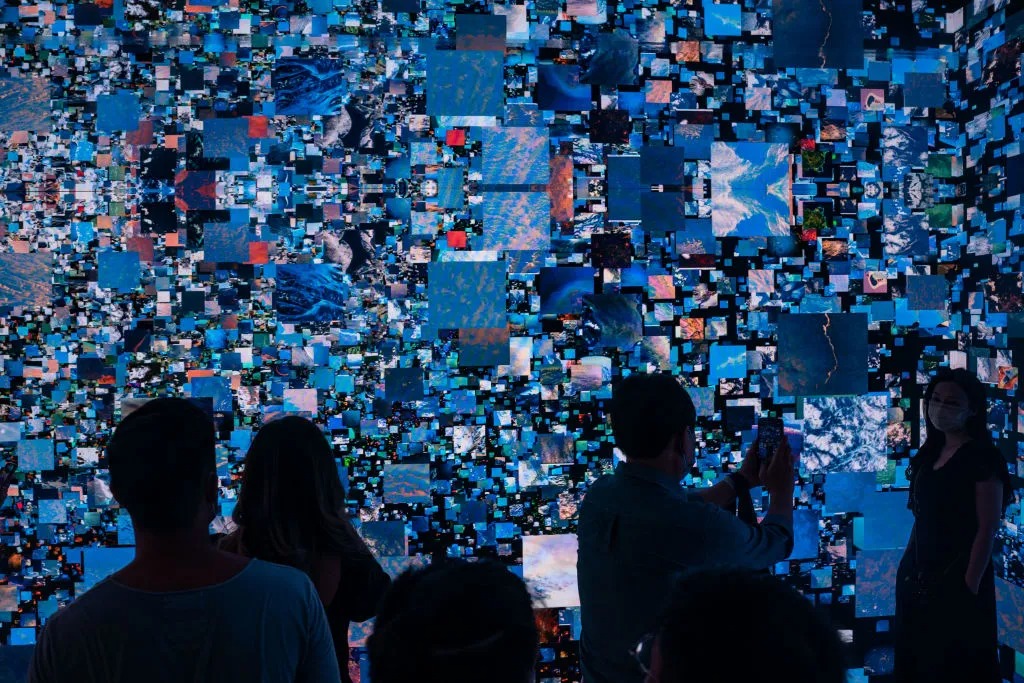The NFT Hit: The System By Which Digital Artists NFTs are unique digital certificates that are associated with images, videos and all kinds of products on the internet. Their authenticity makes them acquire a very high value in the buying and selling market.
It bears similarities with buying the original of a work of art. There is a chrome in the physical market that, year after year, is the most expensive that is exchanged. It is about Messi’s first appearance at Futbol Club Barcelona in the 2004-2005 seasons, from the Spanish collection Panini MegaCracks. For him they have come to pay up to 9,000 euros. It is, practically, a treasure that you can touch, you can feel, you can put it in a house frame if you want.
However, now, in the digital world we are in, a new way of collecting and owning value without having it physically has appeared. They are called Wearable NFT, or ‘non fungible tokens’, and are closely related to the world of cryptocurrencies.
What is a token in this case?
Following the example of Messi’s physical card, if we wanted to sell it as an NFT, the first thing to do would be to create a token with it. That is, convert that chrome into a digital product. In addition, it should be provided with unique parameters. For example, it would be useful to say the origin of that image, what history it has, who made it, when and, if it also has an anecdote or something that makes it even more original, even better.
For example, in March 2021, a digital sticker of Cristiano Ronaldo with Juventus sold for close to $300,000. The reason? The one that his own buyer gave: “It is a card of a football legend, who will always remain so. I will not go into the subject of price, because for me, Cristiano is priceless.”
What makes these digital assets unique?
We are talking about trading cards, but NFTs are extensible to all types of digital assets. In the platforms that are dedicated to the sale and auction of these products there are drawings, animations, 3D renderings, clothing for video game characters, and you can even buy videos with certain plays from historic NBA games or the NFL, as well as a good bag of video games. In short, everything on the internet can be created as an NFT.
For these products to have a value for the collector, they must carry a digital certificate that verifies that they are real and unique or that they are serialized. These certificates are registered in the blockchain or chain of blocks, which is a large database where countless notes are recorded. In short, a kind of accounting book but in the digital world and without the possibility of being modified.
In the end, we bought a Picasso because there is a certificate that treasures it, a signature that attests that it is Picasso’s and not Joan Miró’s, for example. In the digital world, all of this is taken to the blockchain field and added the security layer that cannot be modified.
Why is so much money made from NFTs?
Obviously, the opening of a new digital sales channel, in the midst of a cryptocurrency boom and with collecting on the rise, has meant that the NFT market has experienced some very crazy situations in recent times. For example, the first tweet that was published in history was sold for almost two million dollars, but it falls short compared to the 69 million dollars that the artist Beeple obtained with a digital painting that was sold in the famous auction house Christies.
Now, does publishing an NFT ensure success and becoming a millionaire overnight? Logically, no. Just take a digital tour of OpenSea, the most popular NFT buying and selling platform to see that there is a bit of everything and that, above all, those who sell the most and best are already artists with a certain name or products that stand out for their originality. or for its usefulness in, say, video games or the Metaverse.
Anyone can open an account and start uploading Photoshop drawings, but if they don’t catch the eye of the market, they won’t sell. However, this whole new ecosystem has opened up a new world for digital content creators that previously they didn’t have.

